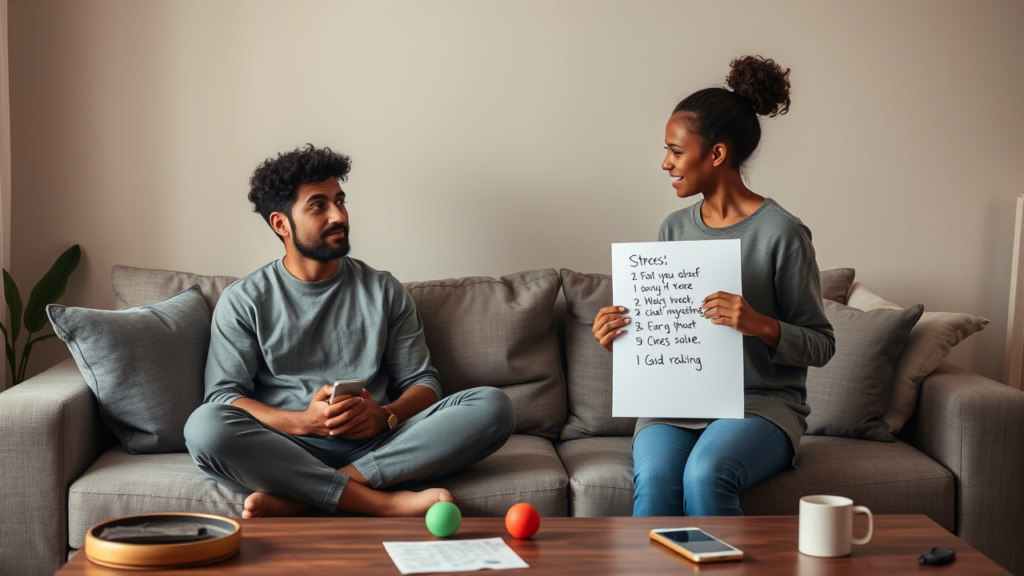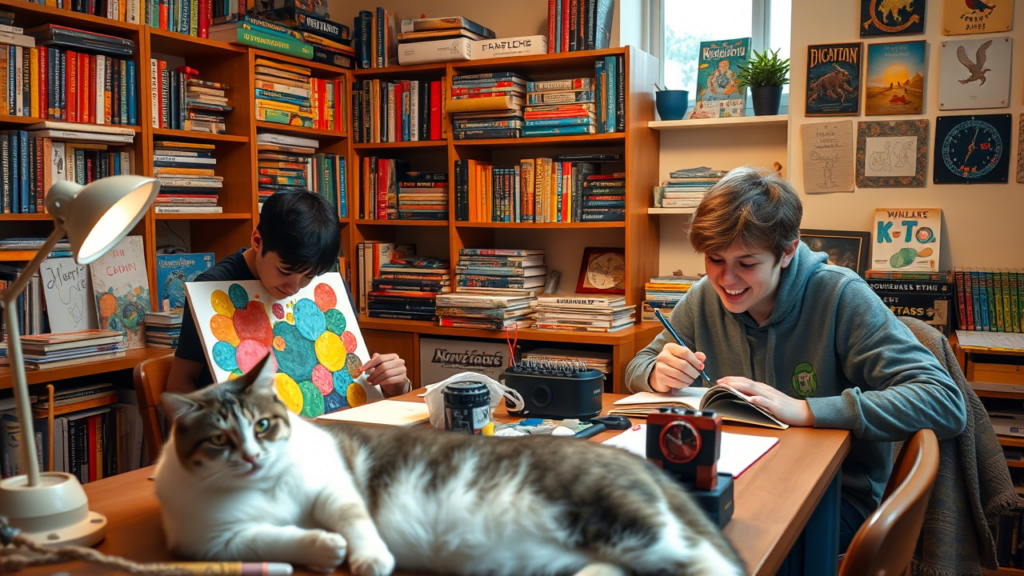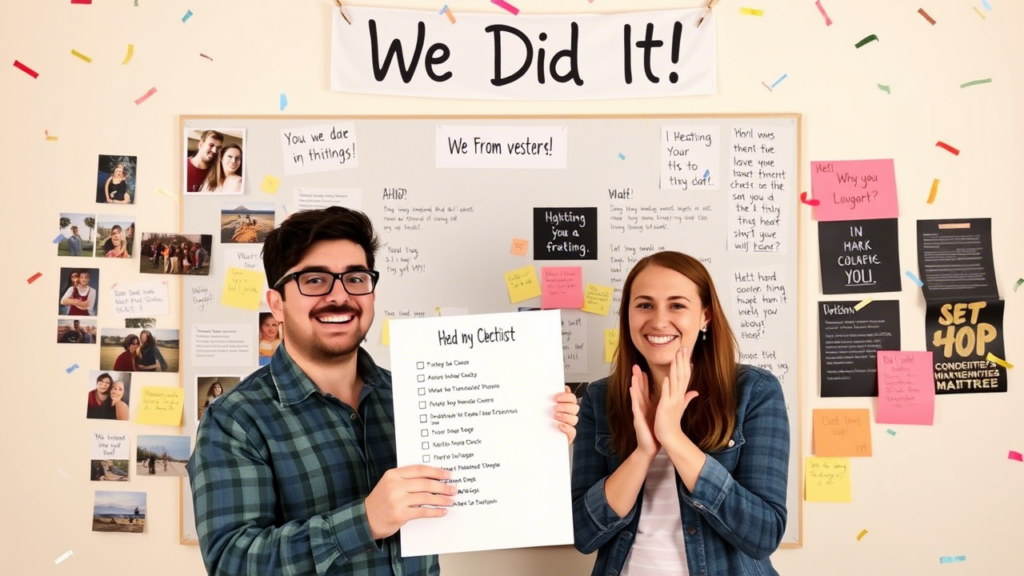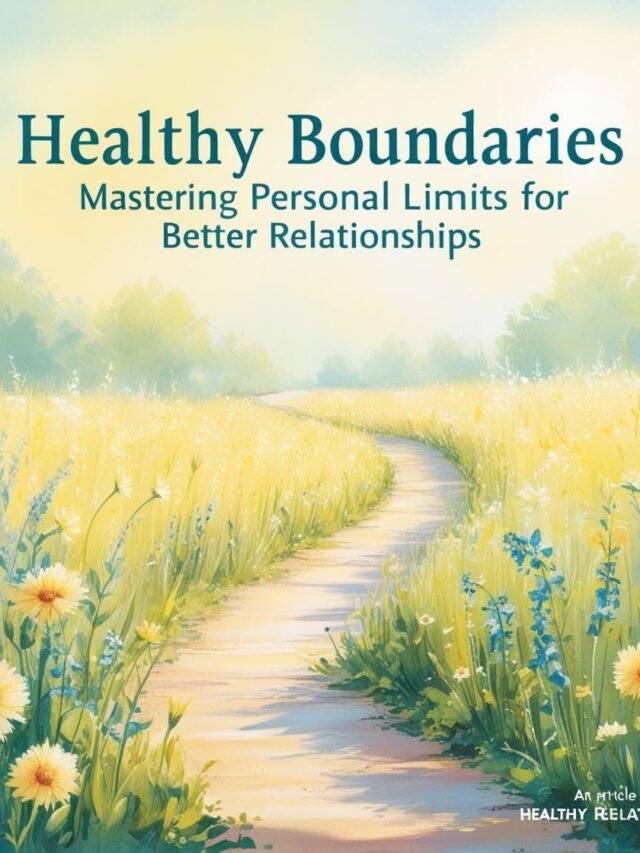In today’s world, the concept of neurodiversity is reshaping how we view relationships. Simply put, neurodiversity acknowledges that neurological differences—such as autism and ADHD—are natural variations of the human brain rather than flaws to be corrected. This shift in perspective has opened up new avenues for understanding and appreciating the unique dynamics that neurodiverse individuals bring to romantic partnerships. For those on the autism spectrum or living with ADHD, dating can be both a rewarding and challenging journey. These relationships often come with their own set of intricacies, shaped by distinct communication styles, sensory sensitivities, and emotional needs. Yet, they also offer profound opportunities for growth, connection, and mutual understanding.
The growing awareness of neurodiversity in romantic contexts is not just a trend it’s a movement toward inclusivity and acceptance. More people are recognizing that love doesn’t have to fit a one-size-fits-all mold. Instead, it can thrive in spaces where differences are celebrated and accommodated. Whether it’s navigating social cues, managing impulsivity, or finding comfort in shared routines, neurodiverse couples are redefining what it means to build meaningful connections. As we delve deeper into this topic, we’ll explore how autism and ADHD influence romantic relationships, offering insights and strategies to help these partnerships flourish. Love, after all, isn’t about erasing differencesit’s about embracing them and creating something beautiful together.

Key Characteristics of Neurodiverse Relationships
To better understand the dynamics at play, let’s break down some of the key characteristics of neurodiverse relationships involving autism and ADHD:
| Trait | Autism Dating | ADHD Romance |
|---|---|---|
| Communication Style | Often direct and literal; may struggle with nonverbal cues like tone or body language. | Energetic and expressive; prone to rapid shifts in topics or emotional intensity. |
| Social Preferences | May prefer structured, predictable interactions; can feel overwhelmed by large social gatherings. | Thrives in dynamic, spontaneous settings; may dislike rigid schedules or overly formal events. |
| Emotional Expression | Tends to express emotions through actions or facts rather than overt displays of affection. | Highly emotive; may experience intense highs and lows, sometimes leading to impulsive decisions. |
| Sensory Sensitivities | Sensitive to noise, light, or touch; may need quiet environments to feel comfortable. | Less affected by sensory input but may become distracted by external stimuli during conversations. |
| Conflict Resolution | Prefers logical, solution-focused discussions; may avoid conflict due to anxiety. | Likely to address issues head-on but may escalate quickly if emotions run high. |
This table highlights the distinct yet complementary traits that autistic and ADHD individuals bring to relationships. While these differences can create challenges, they also offer opportunities for growth and learning when approached with empathy and understanding.
Navigating the Unique Challenges of Autism Dating
Dating while on the autism spectrum can feel like trying to solve a puzzle without all the pieces. Social interactions, which many take for granted, often require conscious effort and mental energy. For autistic individuals, interpreting nonverbal cues like facial expressions, tone of voice, or body language can feel like deciphering a foreign language. A raised eyebrow or a subtle shift in posture might leave them wondering, What does that mean? Misunderstandings can pile up quickly, leading to frustration or feelings of being misunderstood. It’s not that autistic individuals lack empathy or interest it’s that their brains process social information differently, making traditional dating norms feel like an uphill climb.
Then there’s the issue of sensory sensitivities, which can turn seemingly simple moments into overwhelming experiences. Imagine sitting in a bustling café on a first date the clinking of dishes, the hum of conversations, the bright overhead lights all of it amplified to an almost unbearable level. For someone on the spectrum, these sensory inputs aren’t just background noise; they’re distractions that can make it hard to focus on the person across the table. Even well-intentioned gestures, like a surprise outing to a loud concert or a crowded restaurant, can backfire if sensory needs aren’t considered.
But here’s the thing: these challenges don’t define autism dating they shape it. Many autistic individuals find creative ways to navigate these hurdles, often relying on clear communication and structure. For example, setting expectations ahead of time like choosing a quiet venue or agreeing on conversation topics—can help reduce anxiety and create a more comfortable atmosphere. Some even use written communication, like texts or emails, to express themselves more clearly when face-to-face interactions feel overwhelming. By leaning into their strengths, such as honesty and loyalty, autistic individuals can build relationships that feel authentic and fulfilling.
Ultimately, autism dating isn’t about “fixing” anything it’s about understanding and adapting. When both partners approach the relationship with patience and openness, these challenges can become steppingstones to deeper connection. After all, every relationship has its quirks and obstacles; what matters is how you choose to navigate them together.
Common Challenges in Autism Dating (and How to Address Them)
| Challenge | Impact on Relationship | Solution |
|---|---|---|
| Difficulty reading social cues | Misunderstandings and feelings of disconnection. | Use explicit verbal communication; clarify intentions and ask questions to ensure mutual understanding. |
| Sensory overload in public spaces | Anxiety or discomfort during dates, leading to withdrawal or avoidance. | Choose low-stimulation environments like parks or quiet cafes; discuss sensory needs beforehand. |
| Preference for routine | Resistance to change or spontaneity, which may frustrate a partner who enjoys surprises. | Incorporate small surprises within familiar routines; plan flexible activities that allow for adjustments. |
| Emotional expression differences | Partner may misinterpret lack of overt affection as indifference. | Express emotions through actions (e.g., thoughtful gestures) and explain feelings verbally. |
By addressing these challenges proactively, autistic individuals and their partners can foster a relationship built on trust, clarity, and mutual respect.

The Dynamic Energy of ADHD Romance
When it comes to romance, ADHD adds a layer of spontaneity and intensity that can make relationships feel like a whirlwind of excitement or sometimes, chaos. For individuals with ADHD, the thrill of falling in love often feels amplified, thanks to their heightened emotional sensitivity and boundless enthusiasm. They dive headfirst into new connections, bringing an infectious energy that can light up even the most mundane moments. Picture a partner who plans impromptu road trips at midnight or turns grocery shopping into an adventure—this is the kind of zest that ADHD brings to the table. But while this spontaneity can be exhilarating, it also comes with its own set of challenges, particularly when it comes to maintaining focus and consistency over time.
One of the most common struggles in ADHD romance is staying present in the relationship. Distraction isn’t just a minor inconvenience for someone with ADHD it’s a constant companion. A partner might get so absorbed in a new hobby, work project, or even a random thought that they unintentionally tune out during important conversations. It’s not that they don’t care; it’s that their brain is wired to chase novelty and stimulation. This tendency can leave their significant other feeling neglected or questioning whether they’re truly valued. Over time, these patterns can strain the relationship if not addressed openly and compassionately.
Impulsivity is another hallmark of ADHD that can both enrich and complicate romantic dynamics. On one hand, it fuels grand gestures and bold declarations of love, creating memories that feel larger than life. On the other hand, it can lead to decisions made in the heat of the moment—like booking a vacation without consulting their partner or blurting out something hurtful during an argument—that may not always align with long-term goals or mutual expectations. These impulsive actions can create friction, especially if the other partner values stability and careful planning.
Yet, despite these challenges, ADHD romance offers a unique opportunity for growth and creativity. Partners can learn to embrace the unpredictability, finding joy in the unexpected twists and turns. Clear communication becomes key whether it’s setting reminders for important dates, carving out dedicated “focus time” for meaningful conversations, or simply acknowledging when distractions take over. With patience and understanding, ADHD relationships can strike a balance between spontaneity and structure, turning what might seem like obstacles into sources of strength. After all, love thrives not in perfection but in the willingness to adapt and grow together.
Strategies for Managing ADHD-Related Challenges in Relationships
| Challenge | Impact on Relationship | Solution |
|---|---|---|
| Distractibility | Missed conversations or forgotten commitments, leading to frustration. | Use tools like shared calendars or reminder apps; establish designated times for focused interaction. |
| Impulsivity | Spontaneous decisions that may disregard the partner’s preferences. | Practice pausing before acting; discuss major decisions together to ensure alignment. |
| Emotional intensity | Rapid mood swings or explosive arguments that escalate conflicts. | Develop coping mechanisms like deep breathing or journaling; agree on “cool-down” periods during disagreements. |
| Need for novelty | Boredom or restlessness in long-term relationships. | Regularly introduce new activities or hobbies; keep the spark alive with creative date ideas. |
By implementing these strategies, ADHD partners can channel their natural energy into building stronger, more resilient relationships.
Bridging the Gap: Communication Strategies for Neurodiverse Couples

For neurodiverse couples where one or both partners are on the autism spectrum or live with ADHD effective communication is the cornerstone of a thriving relationship. However, given the unique ways each individual processes information, emotions, and social cues, fostering clear and empathetic dialogue can sometimes feel like navigating uncharted waters. The good news? With intentional strategies and mutual effort, these challenges can transform into opportunities for deeper connection and understanding.
One of the most powerful tools for neurodiverse couples is active listening. While this might sound straightforward, it takes on special significance when one partner communicates differently. Active listening means tuning in fully not just to the words being said but to the emotions and intentions behind them. For instance, an autistic partner might express frustration through factual statements rather than overt emotion, while an ADHD partner might jump between topics rapidly, masking underlying concerns. By slowing down, asking clarifying questions, and paraphrasing what they’ve heard, both partners can ensure they’re truly “getting” each other. It’s like piecing together a mosaic: every shard of information helps form a clearer picture of what the other person is trying to convey.
Another game-changing strategy is establishing clear boundaries and expectations. Neurodiverse couples often benefit from discussing preferences upfront—whether it’s how much alone time each person needs, how they prefer to handle conflict, or even how they want to celebrate milestones. Think of it as creating a roadmap for the relationship. For example, an autistic partner might need advance notice before attending social events to mentally prepare, while an ADHD partner might appreciate flexibility in scheduling. These conversations not only prevent misunderstandings but also foster a sense of safety and predictability, which is crucial for both parties.
Of course, no relationship is immune to disagreements, and neurodiverse couples are no exception. During conflicts, it’s essential to approach issues with empathy and patience. Rather than jumping to conclusions or assigning blame, try framing disagreements as collaborative problems to solve together. For instance, instead of saying, “You never listen to me,” rephrase it as, “I feel unheard when we talk about X can we figure out a way to make sure my perspective gets across?” This shifts the dynamic from adversarial to cooperative, reducing defensiveness and opening the door to productive solutions.
Finally, leveraging technology and tools can be a lifesaver for neurodiverse couples. Apps designed for shared calendars, task management, or even mood tracking can help keep everyone on the same page. Visual aids, like charts or written summaries of important discussions, can also bridge gaps in processing styles. And let’s not forget the power of humor! Lightening the mood with a well-timed joke or playful comment can diffuse tension and remind both partners why they chose each other in the first place.
By prioritizing open, respectful communication and tailoring it to fit their unique needs neurodiverse couples can build a foundation of trust and intimacy that stands the test of time. After all, love isn’t about speaking the same language fluently; it’s about learning each other’s dialects and meeting halfway.
Effective Communication Tools for Neurodiverse Couples
| Tool/Strategy | Purpose | Example |
|---|---|---|
| Active Listening | Ensures both partners feel heard and understood. | Paraphrase your partner’s words: “So you’re saying you felt left out because I was distracted?” |
| Written Summaries | Helps clarify complex discussions or decisions. | After a big talk, send a follow-up email summarizing key points and next steps. |
| Shared Calendars | Keeps track of important dates, tasks, and appointments. | Use Google Calendar to schedule date nights or therapy sessions. |
| Visual Aids | Bridges processing differences by providing concrete references. | Create a chart outlining household responsibilities or chore rotations. |
| Humor and Playfulness | Reduces tension and fosters emotional connection. | Share a funny meme or inside joke during stressful moments. |
These tools empower neurodiverse couples to communicate effectively, ensuring that both partners feel valued and supported.
Celebrating Strengths: How Neurodiversity Enriches Romantic Bonds
While neurodiverse relationships come with their share of complexities, they also shine brightly with unique strengths that often go unnoticed. Far from being limitations, traits associated with autism and ADHD can enhance romantic partnerships in profound ways, fostering bonds that are deeply authentic, resilient, and full of joy. At the heart of these relationships lies a commitment to authenticity—something that neurodiverse individuals naturally bring to the table. Autistic partners, for instance, tend to value honesty above all else. Their straightforwardness cuts through the layers of pretense that can sometimes cloud romantic interactions, creating a space where both partners feel safe to be their true selves. There’s no second-guessing motives or decoding hidden meanings; what you see is what you get. And isn’t that the kind of transparency we all crave in love?
ADHD partners, on the other hand, infuse relationships with a contagious sense of adventure and curiosity. Their ability to hyperfocus on passions or hobbies can inspire shared interests that deepen the connection between partners. Imagine spending hours exploring a new trail, diving into a creative project, or geeking out over a favorite TV series—all fueled by the boundless enthusiasm of an ADHD partner. This zest for life reminds us that love doesn’t have to be predictable to be fulfilling. In fact, some of the most cherished memories often stem from those spontaneous, unplanned moments that catch you off guard.
Resilience is another hallmark of neurodiverse relationships. Both autistic and ADHD individuals often develop coping mechanisms to navigate a world that wasn’t built with their needs in mind. These skills translate beautifully into romantic partnerships, where challenges are inevitable. When faced with misunderstandings or setbacks, neurodiverse couples frequently approach problems with creativity and determination. They learn to adapt, compromise, and innovate in ways that strengthen their bond. It’s like building a house together during a storm—not only do you weather the chaos, but you also emerge with something sturdier and more beautiful than before.
Perhaps the most remarkable strength of neurodiverse relationships is the depth of mutual support they cultivate. Partners in these relationships often grow alongside one another, learning to celebrate differences rather than viewing them as obstacles. An autistic partner might teach their significant other the beauty of routine and structure, while an ADHD partner might show their loved one how to embrace spontaneity and playfulness. Together, they create a dynamic equilibrium—a balance that honors both stability and excitement. This mutual growth fosters a sense of teamwork, reminding both partners that they’re not just lovers but allies navigating life side by side.
Ultimately, neurodiverse relationships prove that love isn’t about fitting into predefined molds. It’s about embracing imperfections, celebrating individuality, and finding harmony in the midst of diversity. These partnerships remind us that the strongest connections aren’t built on sameness but on the courage to embrace what makes each person uniquely wonderful.

Strengths of Neurodiverse Relationships
| Strength | How It Benefits the Relationship | Real-Life Example |
|---|---|---|
| Authenticity | Builds trust and reduces misunderstandings. | An autistic partner says exactly what they mean, eliminating guesswork in communication. |
| Adventure and Creativity | Keeps the relationship exciting and engaging. | An ADHD partner plans a surprise picnic under the stars, reigniting romance. |
| Resilience | Equips the couple to handle challenges effectively. | Both partners collaborate to adjust plans when unexpected changes arise. |
| Mutual Growth | Encourages personal development and deeper connection. | One partner learns patience while the other discovers the joy of spontaneity. |
These strengths highlight how neurodiverse relationships can thrive when partners embrace their differences and work together to create something extraordinary.
Building Stronger Connections: Practical Tips for Neurodiverse Couples
Navigating a neurodiverse relationship requires intentionality, patience, and a willingness to adapt. While every couple is unique, certain practical tips can help partners create a supportive and harmonious dynamic, regardless of whether one or both individuals are on the autism spectrum or live with ADHD. These strategies aren’t about “fixing” differences but about fostering understanding and mutual respect, ensuring that both partners feel seen, heard, and valued.
One of the most effective ways to nurture a neurodiverse relationship is by prioritizing open dialogue about needs and preferences. Start by having candid conversations about what each partner requires to feel comfortable and supported. For example, an autistic partner might need designated quiet time after a busy day to recharge, while an ADHD partner might thrive on frequent check-ins to stay connected. Writing these preferences down perhaps in a shared document or journal can serve as a helpful reference point, reducing the chances of miscommunication. Remember, it’s not about accommodating one person at the expense of the other; it’s about finding compromises that honor both perspectives.
Another valuable tool is creating structured routines that provide stability while leaving room for flexibility. Routines can be particularly grounding for autistic individuals, offering a sense of predictability in an otherwise chaotic world. At the same time, ADHD partners can benefit from structured frameworks that help them stay organized and focused. For instance, setting aside specific times for date nights, household chores, or even heartfelt conversations ensures that neither partner feels overlooked. To keep things fresh, incorporate small surprises within the routine a spontaneous note left on the fridge or an impromptu picnic in the living room. This blend of structure and spontaneity caters to both partners’ needs, striking a balance that feels fulfilling for everyone involved.
When disagreements arise and they inevitably will approaching conflicts with empathy and problem-solving mindset can make all the difference. Instead of viewing arguments as battles to win, frame them as opportunities to better understand each other. Use “I” statements to express feelings without placing blame, such as, “I felt overwhelmed when plans changed last minute—I’d love to brainstorm ways we can handle surprises together.” Additionally, consider implementing a “cool-down” period during heated moments. Agreeing to pause the discussion and revisit it later allows both partners to process emotions and return with a clearer headspace.
Lastly, don’t underestimate the power of celebrating small victories along the way. Neurodiverse relationships often involve navigating challenges that others might take for granted, so acknowledging progress no matter how minor can boost morale and reinforce your bond. Did you successfully plan a low-stress outing? Celebrate it. Did you manage to resolve a disagreement without escalating tensions? That’s worth commemorating too. These moments of triumph remind both partners that they’re capable of overcoming obstacles together, strengthening their resilience and deepening their connection.
By incorporating these practical strategies into daily life, neurodiverse couples can cultivate a relationship that thrives on mutual understanding, respect, and joy. Love, after all, isn’t about perfection—it’s about showing up for each other, again and again, in ways that honor who you are.
Practical Tips for Strengthening Neurodiverse Relationships
| Tip | Why It Works | How to Implement It |
|---|---|---|
| Prioritize Open Dialogue | Ensures both partners feel heard and understood. | Schedule regular check-ins to discuss feelings, needs, and concerns. |
| Create Structured Routines | Provides stability and predictability, which benefits both partners. | Use a shared calendar to outline weekly plans, including date nights and alone time. |
| Practice Empathy in Conflict | Reduces defensiveness and fosters collaboration. | Use “I” statements and agree on a cool-down period during heated discussions. |
| Celebrate Small Wins | Reinforces positivity and builds resilience. | Acknowledge achievements, no matter how small, with verbal praise or small gestures like notes. |
| Leverage Technology | Helps manage logistics and stay organized. | Use apps for reminders, shared calendars, or mood tracking to stay aligned. |
These actionable tips provide a roadmap for neurodiverse couples to navigate their unique challenges while celebrating their strengths. By focusing on communication, empathy, and mutual support, these relationships can flourish in ways that defy conventional expectations.
The Transformative Power of Neurodiverse Love
As we’ve explored throughout this article, neurodiverse relationships—whether involving autism or ADHD—are far more than just a collection of challenges to overcome. They are vibrant, dynamic partnerships that redefine what it means to love and be loved. These relationships teach us that connection isn’t about erasing differences but embracing them, finding beauty in the unique ways each partner experiences the world. From the authenticity and resilience that autistic individuals bring to the spontaneity and zest for life that ADHD partners infuse, neurodiverse couples demonstrate that love flourishes most when it’s rooted in acceptance and mutual growth.
It’s time to move beyond outdated notions of “normal” in romantic relationships and celebrate the richness that neurodiversity brings to the table. By fostering greater awareness and understanding, we can create a world where neurodiverse love stories are not only recognized but celebrated. So, whether you’re navigating your own neurodiverse relationship or supporting someone who is, remember this: love isn’t confined to a single mold. It’s a tapestry woven from countless threads, each one adding depth, color, and meaning. Let’s champion these connections, because when we embrace neurodiversity in romance, we all benefit from the lessons it teaches us about empathy, patience, and the boundless potential of the human heart.








